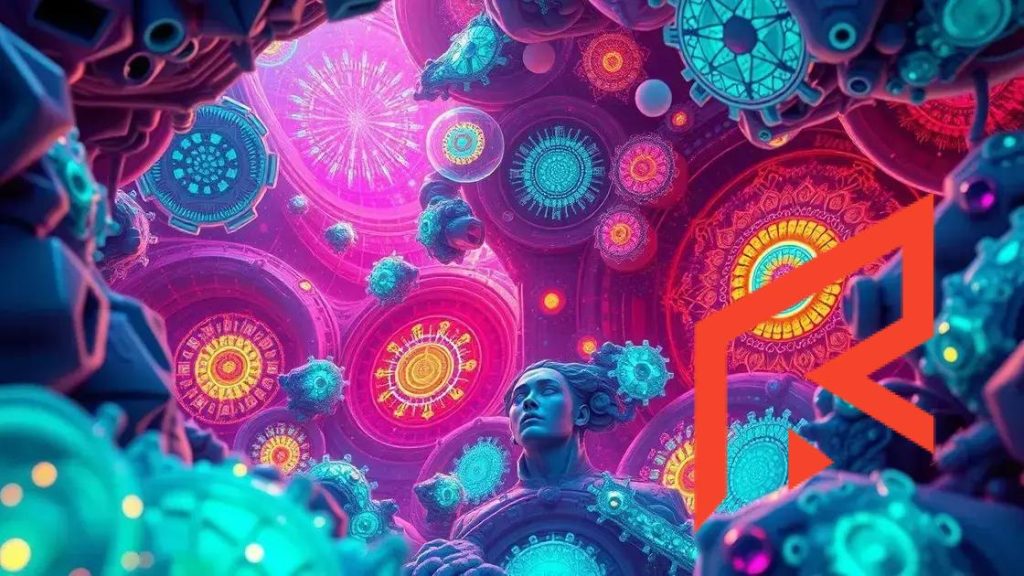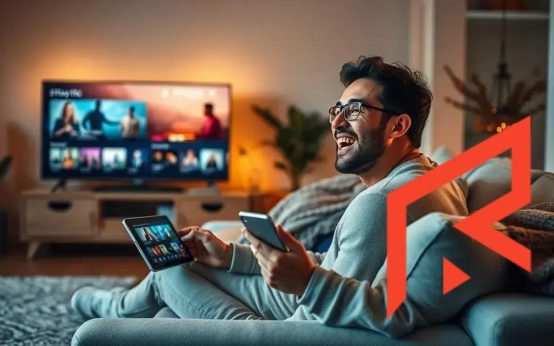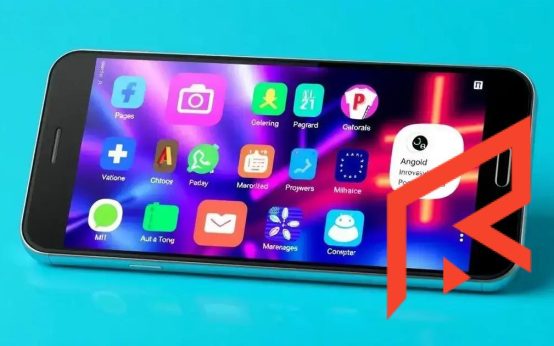AI tools significantly enhance artistic projects by enabling generative art, music composition, interactive installations, and more, thereby expanding creative possibilities and streamlining workflows for artists and creators.
Have you ever wondered how AI tools can transform your creative process? With advancements in technology, these tools are not just a novelty; they can supercharge your artistic possibilities!
Understanding AI tools for image creation
Understanding AI tools for image creation involves recognizing their capabilities and how they function. These tools leverage machine learning algorithms to analyze and generate visuals based on user inputs.
What Are AI Image Creation Tools?
AI image creation tools are software applications that use artificial intelligence to generate images. They process user prompts and create images that match their descriptions, which can be used for various purposes, including marketing, art, and design.
How Do They Work?
Generally, these tools rely on deep learning models that are trained on vast datasets of images. When a user submits a request, the AI analyzes the request and generates a unique image based on learned patterns and styles.
Benefits of Using AI for Image Creation
One significant advantage is the speed at which images can be generated. Instead of spending hours or days creating artwork, users can produce high-quality images in minutes. Additionally, these tools can inspire creativity by offering unique perspectives and styles.
Types of AI Tools Available
There are various types of AI image creation tools, including text-to-image generators, style transfer applications, and photo enhancement tools. Each type serves a specific purpose and can be valuable in different contexts.
Practical Applications
AI image creation tools are utilized in numerous fields, such as advertising, graphic design, and even content creation for social media. They enable professionals to generate visuals that captivate audiences, improving engagement and interest.
Advantages of using AI in digital art
The advantages of using AI in digital art are numerous and transformative. Artists of all levels can benefit significantly from integrating AI tools into their workflow.
Enhanced Creativity
AI tools provide artists with new ideas and inspiration. With algorithms generating different styles and variations, creators can explore possibilities they might not have considered on their own.
Time Efficiency
One of the main advantages is the speed at which work can be completed. Tasks that normally take hours can be finished in minutes, allowing artists to focus on refining their craft rather than getting bogged down in technical details.
Access to Advanced Techniques
AI allows artists to experiment with complex techniques without needing extensive training. For example, style transfer lets artists apply the style of famous paintings to their own work effortlessly.
Personalization
Many AI tools offer customization options tailored to individual preferences. Artists can set parameters and guidelines, ensuring that the output aligns with their unique vision.
Collaboration Opportunities
AI tools can facilitate collaboration among artists by providing a shared platform for creating and editing artwork together, regardless of their physical location. This opens doors to new artistic partnerships and creative exchanges.
Comparative analysis of popular AI image generators
A comparative analysis of popular AI image generators helps users understand their features, strengths, and weaknesses. Each tool has unique qualities that cater to different user needs.
DeepArt
DeepArt is known for its impressive ability to turn photos into artworks. Utilizing style transfer technology, it allows users to apply the visual appearance of one image to another. The results are often stunning and artistic.
DALL-E 2
DALL-E 2, developed by OpenAI, is renowned for its ability to generate diverse images from textual descriptions. It can create imaginative visuals that range from realistic to surreal, making it a versatile choice for various creative projects.
Midjourney
Midjourney focuses on creating high-quality and detailed images based on user prompts. It has a community-driven approach, allowing users to share and refine their creations, fostering collaboration and innovation.
Artbreeder
Artbreeder offers a unique platform where users can combine and modify existing images. This tool allows for collaborative image creation, enabling artists to explore new styles and concepts by blending various artworks.
Runway ML
Runway ML is more than just an image generator. It provides a suite of creative tools powered by AI, aimed at artists and designers. This platform integrates real-time collaboration and multimedia capabilities, which enhances the creative workflow.
Tips for maximizing image generation tools
Maximizing the potential of image generation tools requires a blend of creativity and strategy. Here are some effective tips to enhance your experience and results.
Understand Tool Capabilities
Each image generation tool has unique features. Spend time learning what each tool can do. Understanding the strengths and limitations will help you choose the right one for your project.
Use Clear and Specific Prompts
Phrasing is essential. Give specific and detailed descriptions in your prompts. The more precise you are, the better the tool can understand and create the image you envision.
Experiment with Styles
Don’t hesitate to explore different styles and genres. Many tools offer varying artistic styles, and experimenting can lead to unexpected and delightful results.
Utilize Feedback Options
If the tool allows for adjustments or feedback, use it! Many tools learn and adapt based on user interaction, so providing feedback can improve future outputs.
Combine AI with Manual Edits
AI-generated images can be further enhanced with manual editing. Use graphic design software to tweak details, add elements, or retouch images, blending human creativity with AI efficiency.
Real-world applications of AI in artistic projects
Real-world applications of AI in artistic projects showcase the transformative power of technology in the creative field. Artists and organizations use AI tools to enhance their work and expand their creative horizons.
Generative Art
AI algorithms can create stunning visual art pieces generated from data inputs. Artists use tools that employ machine learning to produce unique artworks based on a set of parameters. These pieces can range from abstract designs to intricate patterns.
Music Composition
AI is also making waves in the music industry by assisting artists in composing music. Tools like AIVA and Amper Music allow creators to generate original compositions based on their style preferences, pushing the boundaries of music creation.
Film and Animation
In film and animation, AI is used for script analysis, storyboarding, and even creating entire scenes. For instance, tools can analyze scripts for pacing and suggest edits, improving storytelling efficiency.
Interactive Installations
Artists integrate AI into interactive installations that respond to audience inputs. These projects engage viewers in a dynamic way, creating immersive experiences that evolve with each interaction.
Augmented and Virtual Reality
AI plays a crucial role in augmented reality (AR) and virtual reality (VR) art projects. It enhances user experiences by providing realistic simulations and generating lifelike environments and characters.
Embracing the Future of Art with AI
As we have explored, AI is reshaping the world of art in exciting ways. From generative art to music composition and interactive installations, the potential applications are vast and varied.
By understanding how to use these tools effectively, artists can unlock new levels of creativity and innovation in their projects. The collaboration between human imagination and AI technology can lead to incredible outcomes.
As you consider incorporating AI into your artistic endeavors, remember to experiment and explore. The integration of AI can enhance not only the creation process but also the final artistic experience.
Embrace this technology and let it inspire your creativity!
FAQ – Frequently Asked Questions about AI in Artistic Projects
What are some popular AI tools for generating art?
Some popular AI tools include DALL-E, DeepArt, and Artbreeder, which help artists create unique images based on their inputs.
How can AI improve creativity in art?
AI can suggest new ideas and styles, allowing artists to explore different artistic directions they might not have considered.
Can AI generate music as well as visual art?
Yes, AI tools like AIVA and Amper Music can compose original music, offering new avenues for creative expression.
What role does AI play in film and animation?
AI can assist in script analysis, storyboarding, and even generating scenes, making the production process more efficient.
Is it possible to collaborate with AI in art projects?
Absolutely! Artists can work alongside AI tools to enhance their creations, merging human creativity with machine intelligence.
Are there any limitations to using AI in artistic projects?
While AI can enhance creativity, it may lack the emotional depth and unique human touch that characterize traditional artworks.


 Privacy Browsers: Discover Better Alternatives to Enhance Your Online Security
Privacy Browsers: Discover Better Alternatives to Enhance Your Online Security  Free streaming services: discover the best platforms available now
Free streaming services: discover the best platforms available now  Android apps that will change your smartphone experience
Android apps that will change your smartphone experience